 W
WChristian Gottfried Daniel Nees von Esenbeck was a prolific German botanist, physician, zoologist, and natural philosopher. He was a contemporary of Goethe and was born within the lifetime of Linnaeus. He described approximately 7,000 plant species. His last official act as president of the German Academy of Natural Scientists Leopoldina was to admit Charles Darwin as a member. He was the author of numerous monographs on botany and zoology. His best-known works deal with fungi.
 W
WAphidius is a genus of insects of the family Braconidae.
 W
WThe Braconinae are a large subfamily of braconid parasitoid wasps with more than 2,000 described species. Many species, including Bracon brevicornis, have been used in biocontrol programs.
 W
WBraconini is a tribe of wasps in the subfamily Braconinae.
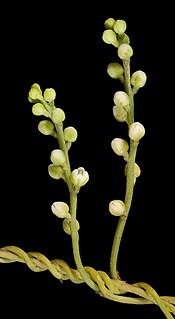 W
WCassytha racemosa is a parasitic perennial in the Lauraceae family. It is found in Western Australia.
 W
WDacrymyces is a genus of fungi in the Dacrymycetales order. The genus contains about 39 widely distributed species.
 W
WDendroceros is a genus of hornworts in the family Dendrocerotaceae. The genus contains about 51 species native to tropical and sub-tropical regions of the world.
 W
WDesmocladus is a genus of herbs in the family Restionaceae, all species of which are endemic to Australia, and found in Western Australia and South Australia. In this genus, the stems are the principal photosynthesizers.
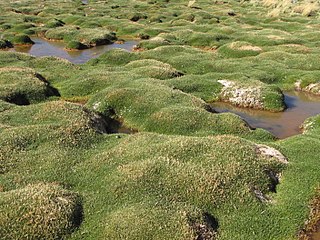 W
WDistichia is a genus of plants in the family Juncaceae described as a genus in 1843.
 W
WGyrostemon subnudus is a plant in the family, Gyrostemonaceae. It was first described as Amperea subnuda in 1848 by Nees von Esenbeck, and transferred to the genus, Gyrostemon in 1873 by Henri Ernest Baillon.
 W
WHygroryza (watergrass) is a genus of Asian plants in the grass family.Species
 W
WLepidobolus is a plant genus in the family Restionaceae, described as a genus in 1846. The entire genus is endemic to Australia.SpeciesLepidobolus basiflorus Pate & Meney - WA Lepidobolus chaetocephalus F.Muell. - WA Lepidobolus deserti Gilg ex Diels & Pritz. - WA Lepidobolus drapetocoleus F.Muell. - SA, Vic Lepidobolus preissianus Nees - WA Lepidobolus spiralis Meney & K.W.Dixon - WA
 W
WLepidosperma tetraquetrum is a sedge of the family Cyperaceae that is native to Southwest Australia.
 W
WMairia is a genus of perennial herbaceous plants assigned to the daisy family. All species have leathery, entire or toothed leaves in rosettes, directly from the underground rootstock, and one or few flower heads sit at the top of the stems that carry few bracts. These have a whorl of white to mauve ray florets surrounding yellow disc florets in the centre. In general, flowering only occurs after the vegetation has burned down. The six species currently assigned to Mairia are endemic to the Western Cape and Eastern Cape provinces of South Africa. Some of the species are called fire daisy in English and vuuraster in Afrikaans.
 W
WMicrostegium is a genus of African, Asian, and Pacific Island plants in the sorghum tribe within the grass family. Browntop is a common name.Species
 W
WPanicum lycopodioides, common name false club-moss panic grass or panic faux-lycopode, is endemic to the French island of Réunion in the Indian Ocean. It is found at high altitudes on the island, at elevations over 2000 m. The highest point on the island is Piton des Neiges, 3069 m. The plant requires full sun-light and a cold climate.
 W
WPoa drummondiana is a perennial herb in the Poaceae family.
 W
WPtilotus exaltatus, more commonly known as pink mulla mulla, is an erect annual herb endemic to large parts of arid and semi-arid Australia. It grows throughout most areas of Australia except the Nullarbor Plain, occurring geographically above a line drawn from Perth to Esperance. The species was first observed and described in 1810, and comprehensively catalogued in 1971.
 W
WPtilotus humilis is an annual herb in the Amaranthaceae family, native to Western Australia. It was first described as Trichinium humile by Nees von Esenbeck in 1845 but was transferred to the genus, Ptilotus, by Ferdinand von Mueller in 1868.
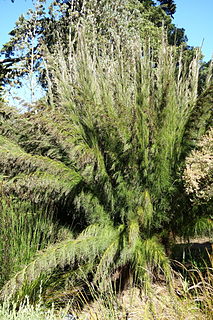 W
WRhodocoma is a group of plants in the Restionaceae described as a genus in 1836. The entire genus is endemic to South Africa (Cape Province and KwaZulu-Natal.Species
 W
WSchaueria is a genus of flowering plants in the family Acanthaceae. They are endemic to Brazil, from Bahia to Rio Grande do Sul. They are characterized by small elongated white or yellow flowers and narrow to thread-like green or yellow bracts. They are found mainly in rain forests, semi-deciduous mountain forests, and restingas. They are pollinated by bees and hummingbirds.
 W
WSchizachyrium is a widespread genus of plants in the grass family. The name is derived from the Ancient Greek words σχίζειν, meaning "to split," and ἄχυρον, meaning "chaff." It refers to either the glume or the toothed lemmas.
 W
WSericocarpus is a genus of North American plants in the aster tribe within the sunflower family. Whitetop aster is a common name for the genus.SpeciesSericocarpus asteroides - United States Sericocarpus linifolius - United States Sericocarpus oregonensis United States Sericocarpus rigidus - Canada (BC), United States Sericocarpus tortifolius - United States formerly included
 W
WStipagrostis is a genus of African, Asian, and Russian plants in the grass family.Species
 W
WSymphyotrichum is a genus of over 100 species and naturally occurring hybrids of herbaceous annual and perennial plants in the composite family Asteraceae, most which were formerly treated within the genus Aster. The majority are endemic to North America, but several also occur in the West Indies, Central and South America, as well as in eastern Eurasia. Several species have been introduced to Europe as garden specimens, most notably New England aster and New York aster.
 W
WSymphyotrichum chilense is a species of flowering plant in the family Asteraceae known by the common names Pacific aster and common California aster. It is native to the west coast of North America from British Columbia to Southern California and the Channel Islands. It grows in many habitats, especially along the coast and in the coastal mountain ranges. Despite its Latin name, it does not occur in Chile. Pacific aster blooms from June to October with violet rays surrounding a yellow center.
 W
WSymphyotrichum firmum, commonly known as shining aster, shiny-leaved aster, smooth swamp aster, and glossy-leaved aster, is a species of flowering plant in the daisy family Asteraceae native to Canada and the United States.
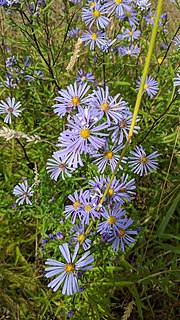 W
WSymphyotrichum subspicatum is a species of flowering plant in the family Asteraceae native to western North America. Commonly known as Douglas’s aster, it is a perennial, herbaceous plant that may reach 40 to 120 centimeters tall. Its flowers have violet ray florets and yellow then reddish disk florets.
 W
WTecticornia halocnemoides, commonly known as shrubby samphire or grey glasswort, is a species of succulent, salt tolerant plant endemic to Australia. It grows as a spreading or erect shrub up to fifty centimetres high. It was first published as Arthrocnemum halocnemoides in 1845, but transferred into Halosarcia in 1980, and into Tecticornia in 2007.
 W
WTetramerium is a genus of plants belonging to the family Acanthaceae. It is found mainly in the Americas, especially in tropical dry forests. Christian Gottfried Daniel Nees von Esenbeck first described the genus in 1846 after collecting two species on the journey of HMS Sulphur.
 W
WThysanolaena is a genus of plants in the grass family, the only genus in the tribe Thysanolaeneae. Its only recognized species is Thysanolaena latifolia, native to Bangladesh, Bhutan, Cambodia, China, India, Indonesia, Laos, Malaysia, Myanmar, Nepal, New Guinea, Philippines, Sri Lanka, Taiwan, Thailand, and Vietnam. It is also naturalized in Mauritius, Seychelles, Gambia, Tanzania, Hawaii, California, the West Indies and Brazil. Tiger grass, Nepalese broom grass, broom grass, broom stick are common names for this plant, in Nepali amliso and jharu in Assamese. The flowers of this plant are used as cleaning tool or broom, which is known as कुच्चो kuchcho in Nepali, झाड़ू jhadu in Hindi.
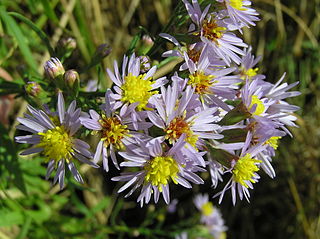 W
WTripolium is a genus of Eurasian and North African plants in the aster tribe within the sunflower family.
 W
WVerticillium is a genus of fungi in the division Ascomycota, and are an anamorphic form of the family Plectosphaerellaceae. The genus used to include diverse groups comprising saprobes and parasites of higher plants, insects, nematodes, mollusc eggs, and other fungi, thus the genus used to have a wide-ranging group of taxa characterised by simple but ill-defined characters. The genus, currently thought to contain 51 species, may be broadly divided into three ecologically based groups - mycopathogens, entomopathogens, and plant pathogens and related saprotrophs. However, the genus has undergone recent revision into which most entomopathogenic and mycopathogenic isolates fall into a new group called Lecanicillium.